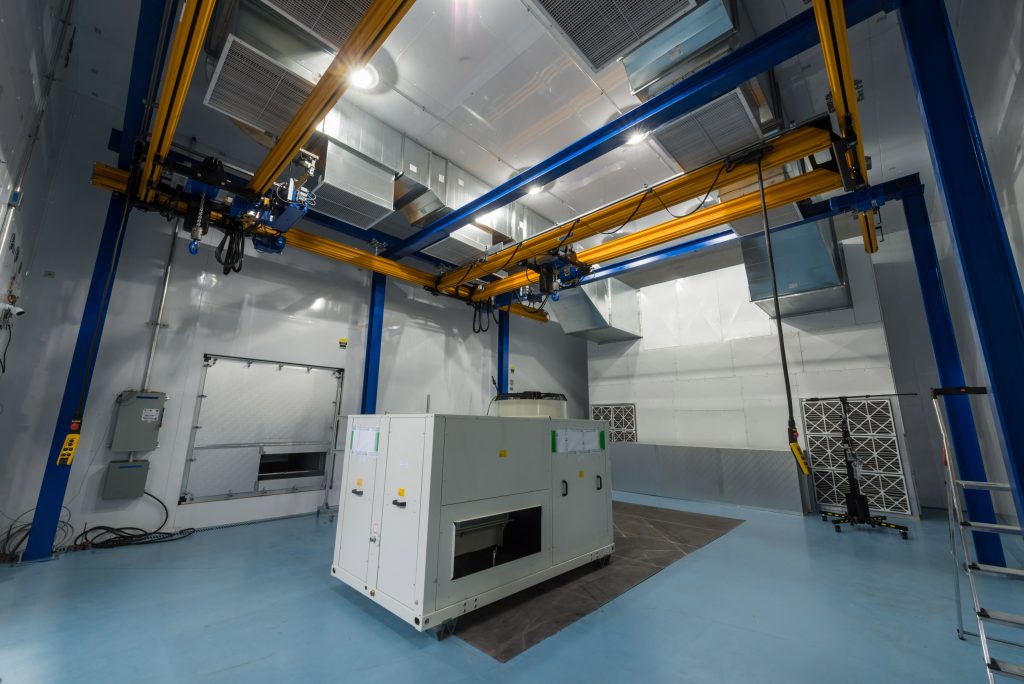Heating and cooling capacity
Total cooling capacity: This is the quantity of energy transported over a unit of time between the indoor heat exchanger or evaporator and the outdoor heat exchanger or condenser.
In turn, it is divided into:
Sensitive cooling power: This is the quantity of heat that the sample carries from the indoor environment and is reflected as a decrease in room temperature.
Latent cooling power: This is the quantity of heat that the sample carries from the indoor environment and is reflected as a decrease of water in the air (humidity).
Heating capacity: This is the quantity of energy transported over a unit of time between the outdoor heat exchanger (acting as evaporator) and the indoor heat exchanger (acting as condenser).
Test methods:
The cooling and heating capacity measurement is fundamental to characterise the performance of climate equipment. It defines its capacity to heat and/or cool a liquid or gas medium, covering the demands of the facility or room where it is installed.
Power can be obtained via different test methods depending on the type of product under assessment, the magnitude of the expected cooling or heating capacity, the type of exchange (air or water / salt water) and the precision requirements. The most widely employed methods, also affording the most accurate measurements are:
- Calorimetric method
This applies to equipment that use Air as the heat exchange medium. It consists of determining the quantity of energy we supply in a number of quasi-adiabatic test rooms (with controlled, minimum energy exchanges through the walls) to compensate for the cooling or heating effect of the assessed sample, while maintaining the temperature and air humidity constant.
This is the most accurate method to assess cooling or heating power on air exchange equipment. At CEISLAB it is applied to equipment with design power of up to 12 kW.
- Enthalpy method
This is applied to equipment in which air or water / salt water is used as the heat exchange medium. It consists of determining the quantity of energy supplied by the equipment to the exchange medium, and 3 parameters are determined:
- Mass quantity, whether air or water / salt water crossing over the equipment heat exchanger.
- Enthalpy or specific heat of the exchange medium before entering the heat exchanger.
- Enthalpy or specific heat of the exchange medium at the output of the heat exchanger.
Cooling capacity = 1 * (2 – 3) or heating capacity = 1 * (3 -2)
At CEISLAB this method is applied to equipment of up to 100 kW.

